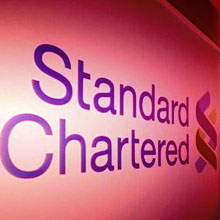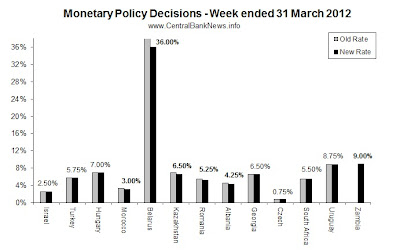By MoneyMorning.com.au
Lately, Google’s (Nasdaq: GOOG) Mountain View, CA-based headquarters have looked more like the clandestine lair of a Bond villain than a business centre.
The company has poured more than $120 million dollars into construction projects that are fit to house testing labs and top-secret initiatives with names like “Project X.”
One theory about what’s going on at the Googleplex involves the development of a driverless car.
And that may well be true – but the more immediate and practical use for the renovation would be to expand the base from which the company competes with rival Apple (Nasdaq: AAPL).
Google’s war with Apple continues to escalate as the two companies fight for ground in three major consumer markets: mobile devices, Internet search and digital media.
Google fired its first salvo at Apple with the introduction of its Android operating system, which has come to dominate the smartphone market.
Apple recently retaliated by introducing Siri – the voice-activated search engine that has been a major selling point for the latest iPhone.
Still, the biggest clash is set to take place in your living room.
Google and Apple are fighting to be the company that supplies your media at home, stores it for you in a cloud drive, and then distributes it to your wireless devices.
Google has even expressed interest in bringing other appliances into the fold, connecting things like lighting, heating, and air conditioning via the Android operating system – a seamless integration dubbed “Android@Home.”
The goal is to let you control every electronic device in your home through a smartphone or tablet.
This is a battle for what futurists call the “digital living room.”
And it’s just getting started. Here’s a sneak peak at what’s in store.
GOOG and the Digital Living Room
In addition to the Android, Google recently launched an online music store, a social media Website (a la Facebook), and a television platform called Google TV.
And this year, the company is set to launch two more game-changers – a cloud storage service called Google Drive, or G-Drive, and a yet-to-be-named home entertainment system capable of streaming music and other media to your living room.
G-Drive will have to compete with Apple’s iCloud and Amazon.com (Nasdaq: AMZN) storage service in the still-fledgling cloud computing market.
Some $830 million was spent on cloud services worldwide last year, and that figure is expected to grow by 47% to $1.2 billion this year, according to research firm Gartner (NYSE: IT). Gartner projects that the market for cloud-related services will reach $148 billion by 2014.
With its online store and cloud service, Google is in position both to sell and store music, video, and e-books. But to truly gain a foothold in the digital living room, the company must also control the electronic devices that enable consumers to enjoy these things.
Google has already partnered with companies like Samsung and Sony to incorporate its Android operating system into television sets. But now the company appears ready to cut out the middleman and create its own hardware.
People familiar with the matter told the Journal that Google is developing a home-entertainment system capable of streaming music from G-Drive. Down the road, the new device could also stream video.
These days, the market for home audio equipment isn’t very big. Tom Cullen, co-founder of Sonos – a company that makes such hardware – says the total global value of the market is about $8 billion.
Sonos’ annual sales last year totaled about $200 million, compared to $38 billion in revenue for Google. Of course, the market for streaming video figures to be much bigger.
Streaming video on demand is becoming increasingly popular since online video-rental company Netflix (Nasdaq: NFLX) began streaming unlimited content to subscribers in 2008.
Netflix now has 21.67 million streaming subscribers worldwide.
Still, this would be a huge shift in strategy for Google, as it would be the first time it’s ever attempted to build market hardware – something Netflix doesn’t do, either. Up until this point, Google has relied on other companies to build and brand hardware that uses the Android OS.
A New Direction for Google Inc.
Rolling out its own device would mean corralling hardware suppliers, manufacturers, and retailers. It might also put Google at odds with the electronics manufacturers that have made Android the world’s most widely used operating system in smartphones.
That’s a risk Google is willing to take to make Android your home’s operating system. It’s also a challenge for which the company is better equipped since paying for Motorola Mobility – the market leader in cable set-top boxes.
The recent renovations to Google HQ figure to be another asset. The San Jose Mercury News managed to dig up public records that shed some light on the company’s plans.
The highest-profile project that Google is working on is the “Google Experience Center” – a 120,000-square-foot private museum that will house the company’s most avant-garde innovations. The purpose of the centre will be to “to share visionary ideas, and explore new ways of working” with up to 900 guests, including prospective business partners and clients.
Additionally, new testing labs – some that screen out radio frequency and others with blacked-out windows – are being built to cater to other top-secret initiatives such as the aforementioned Project X.
So while Apple is dominating the headlines, Google is quietly plotting to steal them.
Jason Simpkins
Managing Editor, Money Morning (USA)
Publisher’s Note: This is an edited version of an article that originally appeared in Money Morning (USA).
From the Archives…
A Better Inflation Bet Than Gold?
2012-03-23 – Kris Sayce
3D Printing: How “Desktop Factories” Will Create the Next $1 Trillion Industry
2012-03-22 – Michael Robinson
How to Invest in the Fastest-Growing Energy Business of the 21st Century
2012-03-21 – Aaron Tyrrell
Why You Should Build Your Wealth Using the Biggest BRICS Possible
2012-03-20 – David Thomas
Oil Getting Ready For Its Next Rally
2012-03-19 – Dr. Alex Cowie

Secret Projects At Google




